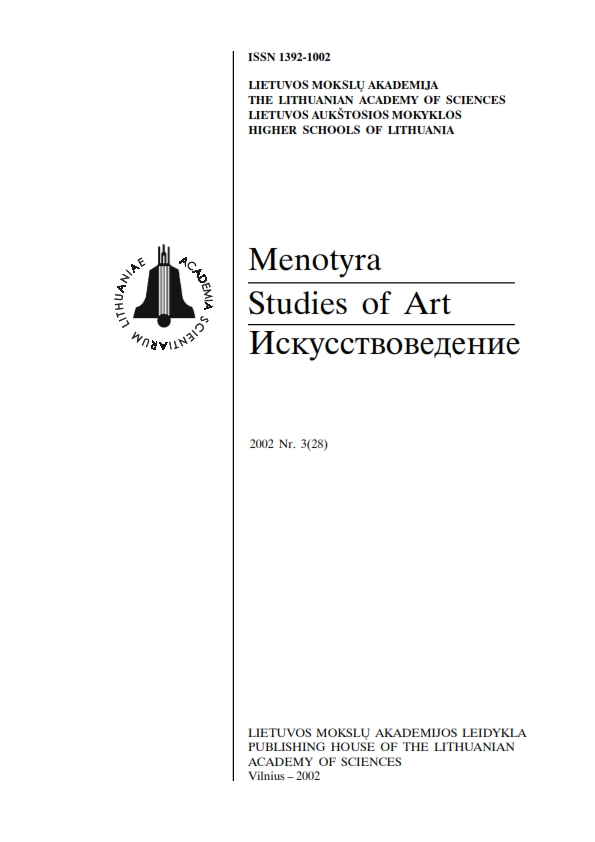Vilniaus dominikonų vienuolyno prie Šv. Dvasios bažnyčios pirmo aukšto koridoriaus XVIII a. II pusės sienų tapyba
A fresco from the second half of the 18th century in the ground-floor corridor of the Vilnius Dominican friary beside the church of the Holy Spirit
Author(s): Dalia KlajumieneSubject(s): Christian Theology and Religion, Visual Arts, 18th Century
Published by: Lietuvos mokslų akademijos leidykla
Summary/Abstract: The fresco in the corridor of the former Vilnius Dominican Friary beside the Church of the Holy Spirit is a polychrome monument arising from the second half of the 18th century, which was created about 1756-1770. This cycle of frescos that has just about finished rotting away is being talked about not only due to an interesting and luxuriant iconographic programme, but also due to the fact that many parts of the huge scenes and also the emblems are already difficult to discern or have crumbled together with all the plaster and after a year or so can be lost forever and forgotten. The huge compositions are traditional iconography. These were popular subjects in Christian art and therefore, in spite of their destruction, can be easily reconstructed. In addition, part of the compositions was recorded in the first half of the 20th century in the photographs (of J. Bulhakas and others in 1914) when the fresco still appeared nice after renovation at the end of the 19th century, however, part of emblems have been irretrievably lost: both the image and the inscription explaining it were destroyed. The theoretical reconstruction of this cycle (due to a lack of funds it is impossible to restore it) is important, because this is so far the only known fresco monument surviving from the 18th century in Lithuania, in which the prayers popular in the Christian liturgy were portrayed by means of painting: the Rosary of the Holy Virgin Mary and the Litany to the Holy Virgin Mary. The entire composition, which will come in useful in the future in renovating this complex, is discussed sequentially in the article. In segments of the cross vault of the Friary's ground-floor corridor, the mysteries of Mary's rosary were painted, which are further supplemented by compositions on the walls in the southern wing. Here are interwoven the mysteries of the life of the Holy Virgin Mary and Jesus Christ with the most important moments in the history of the Dominican order and images of the most famous saints and martyrs of that Order. In the west, north, and south of the corridor, the compositions, which are laid out in lines are grouped in three parts like in the Rosary: the Joyful, the Sorrowful, and the Glorious. Each part is assigned five mysteries painted in the cross vault in the direction of the procession's movement in the corridor. This scene is meaningfully supplemented with ten emblematic compositions laid out on the sides of the cross vault and in segments of the porches. Between the parts with the Sorrowful and the Glorious mysteries, in the covering of the composed north and south lines, and in the vault of the east corridor's lines, 21 emblems are painted, which reflect the text of the Liturgy of the Holy Virgin Mary.
Journal: Menotyra
- Issue Year: 2002
- Issue No: 3(28)
- Page Range: 9-17
- Page Count: 9
- Language: Lithuanian

